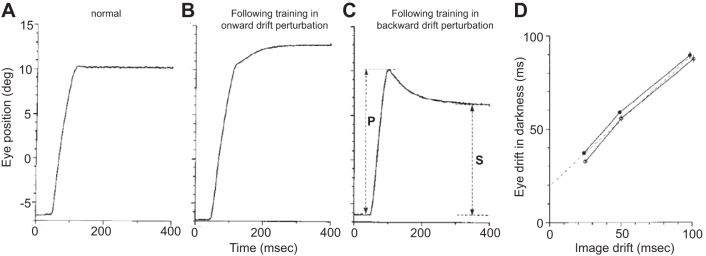Fig. 13.
Mismatch between the motor commands that move the eye and commands that hold the eye produces postsaccadic drift. A: spontaneous saccade in the dark under normal conditions. B: adaptation of the gaze-holding system. Spontaneous saccade in the dark following days of training with a perturbation that moved the visual field following completion of each saccade. Each saccade was followed by a drift of the visual image in the direction of the just-completed saccade (onward drift perturbation), with a time constant of 50 ms and amplitude of one-half of the preceding saccade. The saccade in the dark shows an onward postsaccadic drift with a time constant of ~50 ms. C: spontaneous saccade in the dark following days of training in which each saccade was followed by a shift of the visual stimulus in the direction opposite that of the just-completed saccade (backward drift perturbation) with a time constant of 50 ms and amplitude of one-half of the preceding saccade. P, rapid portion of the saccade; S, final amplitude of the saccade. D: time constant of the postsaccadic drift for spontaneous saccades made in the dark following training with perturbations that had 25, 50, or 100 ms time constants. From Optican and Miles (1985), with permission.

